-
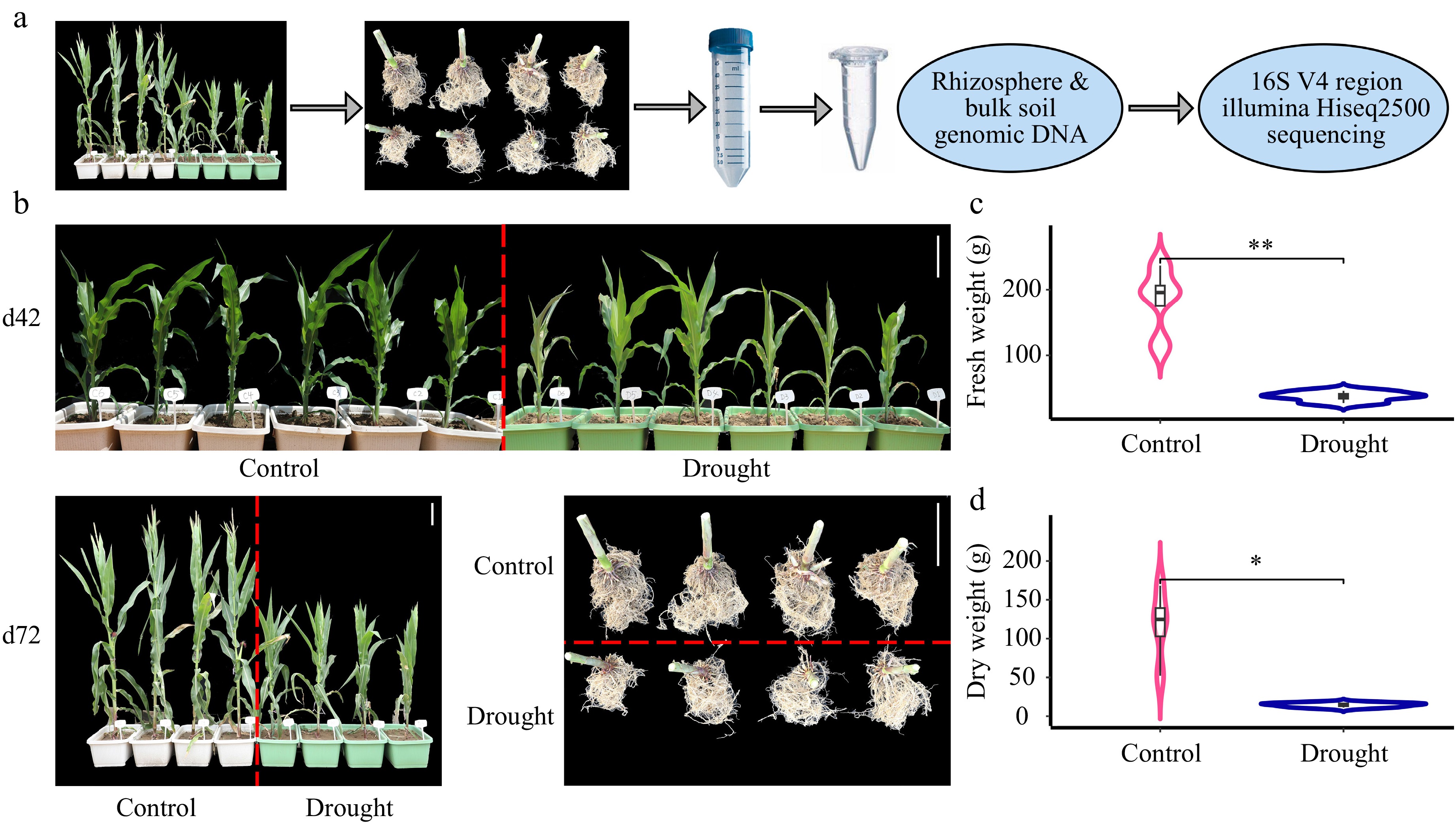
Figure 1.
Root performs significantly differently under drought stress vs normal conditions. (a) Flowchart of the study performed from the field work to the next generation sequencing. (b) The plant growth at days 42 (d42) and harvest at d72, as well as the root harvest at d72 under control and drought conditions, the scale bar is 20 cm. Statistics of the weight of (c) fresh roots, and (d) dry roots using R/Student's t test between each two of the control and drought groups. ** indicates p < 0.01, * indicates p < 0.05.
-
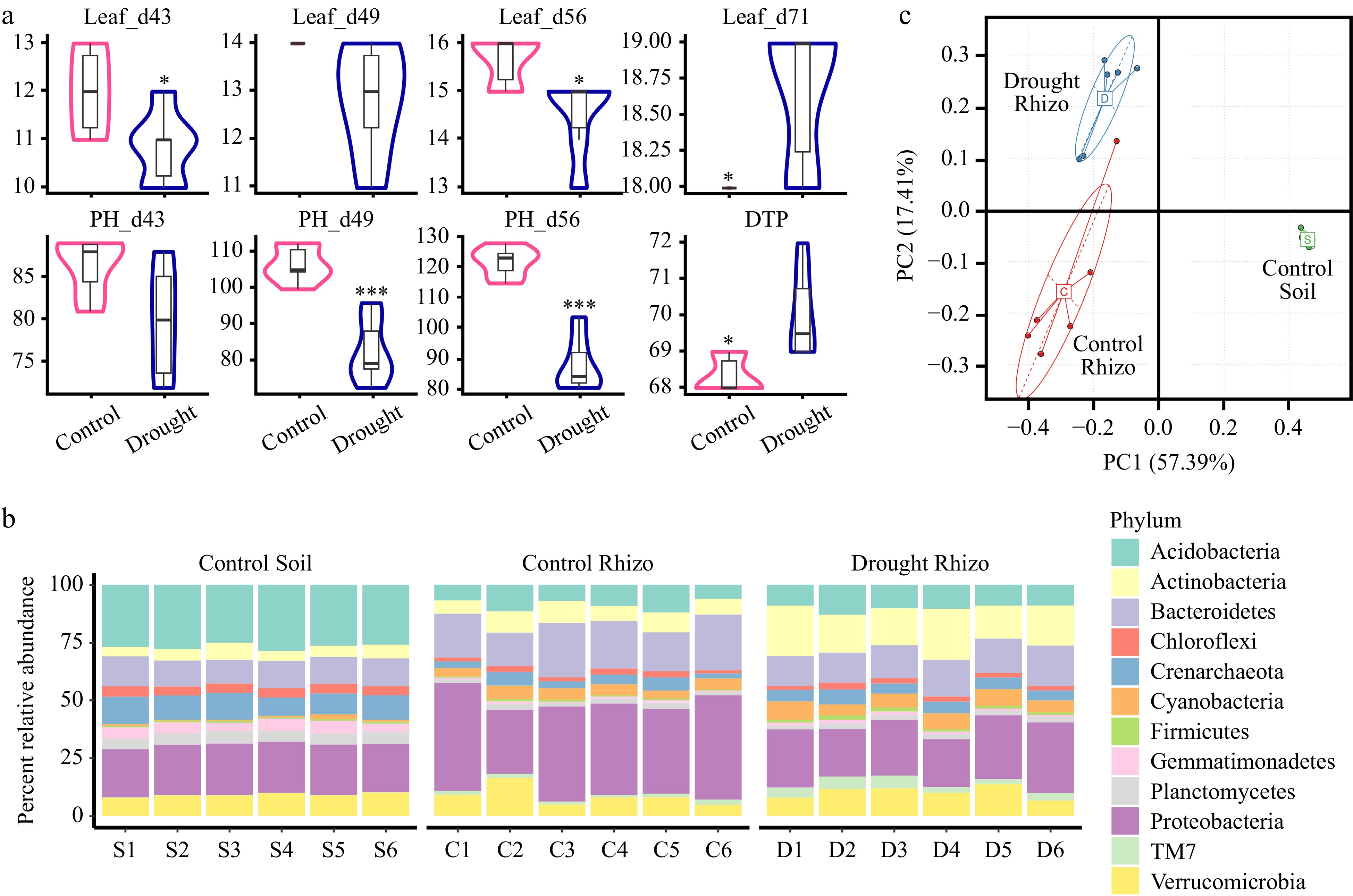
Figure 2.
Summary statistics of phenotypes and relative abundance of the top 12 of the most abundant bacterial phyla. (a) Summary statistics of number of leaves (#Leaf) on days 43, 49, 56, and 71 after sowing, plant height (PH, cm) at days 43, 49, and 56 after sowing, and days to pollen shed (DTP, days) using Student's t test between cotrol and drought groups. * indicates p < 0.05, *** indicates p < 0.001. (b) Percent relative abundance of the most abundant phyla for control, drought treatments in rhizospheres and for control in bulk soils. All individuals were arranged in order within each group along the x axis. (c) Principal component analysis across the phyla from the Control Soil, control rhizosphere (Control Rhizo), and drought rhizosphere (Drought Rhizo) microbiome data.
-
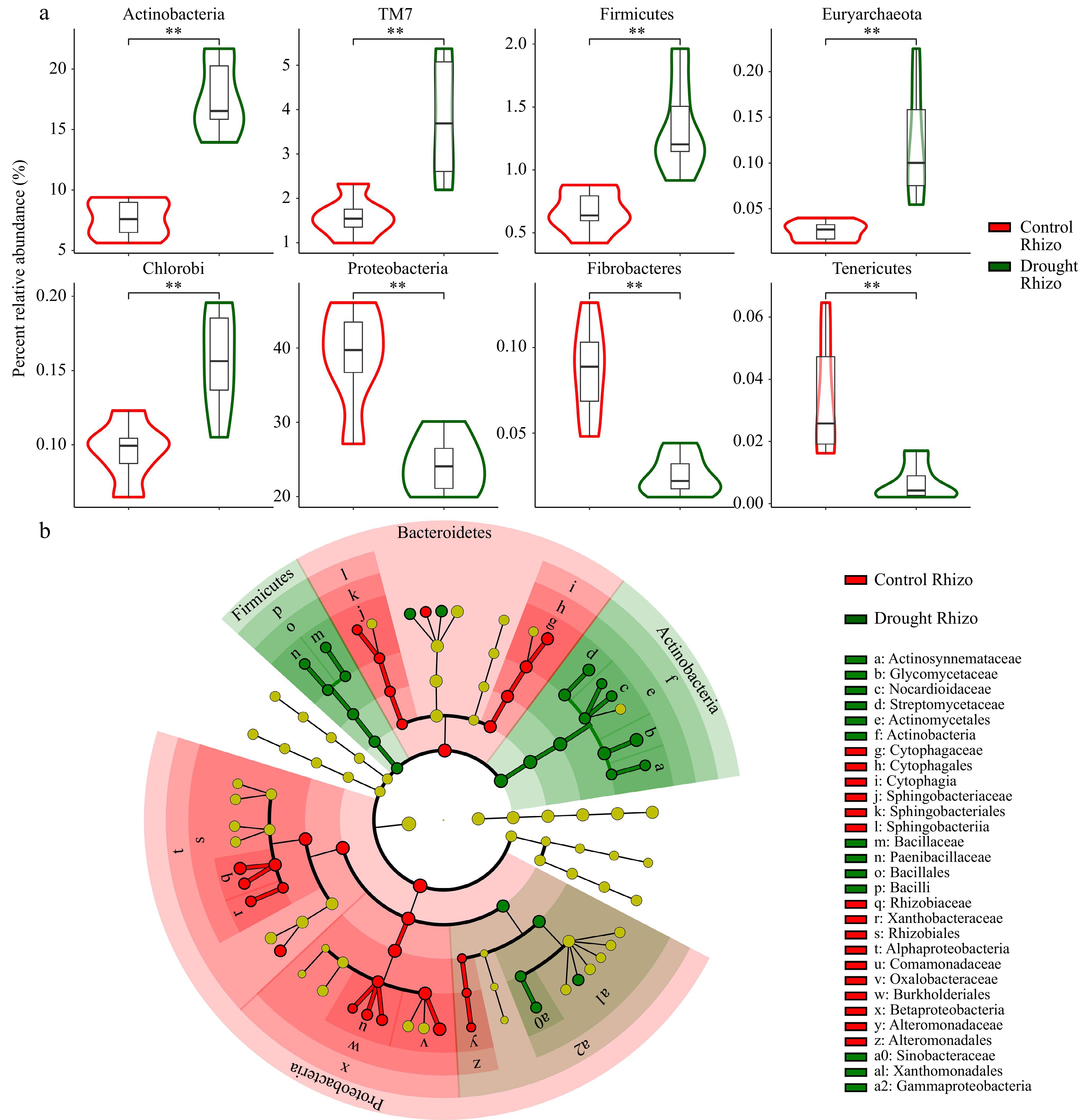
Figure 3.
(a) Wilcoxon Signed Rank Test for relative abundance of the abundant bacterial phyla, and (b) LEfSe analysis in control (red) and drought (darkgreen) groups. ** indicates p < 0.01.
-
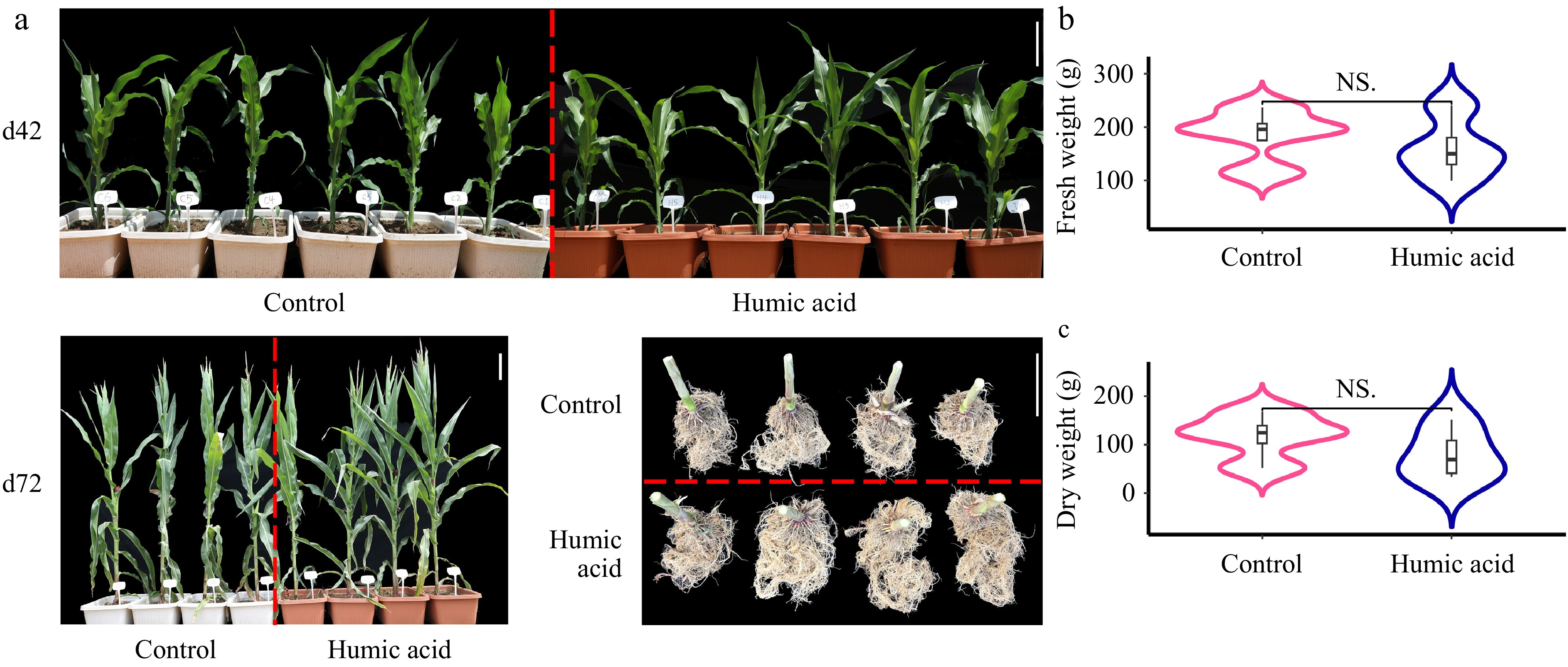
Figure 4.
Humic acid potentially benefits root growth vs normal conditions. (a) The plants grown on days 42 (d42) and harvested at d72, as well as the roots harvested on d72 under control and humic acid conditions, the scale bar = 20 cm. Statistics of the weight of (b) fresh roots, and (c) dry roots using R/Student's t test between the control and humic acid conditions. 'NS' indicates not significant.
-
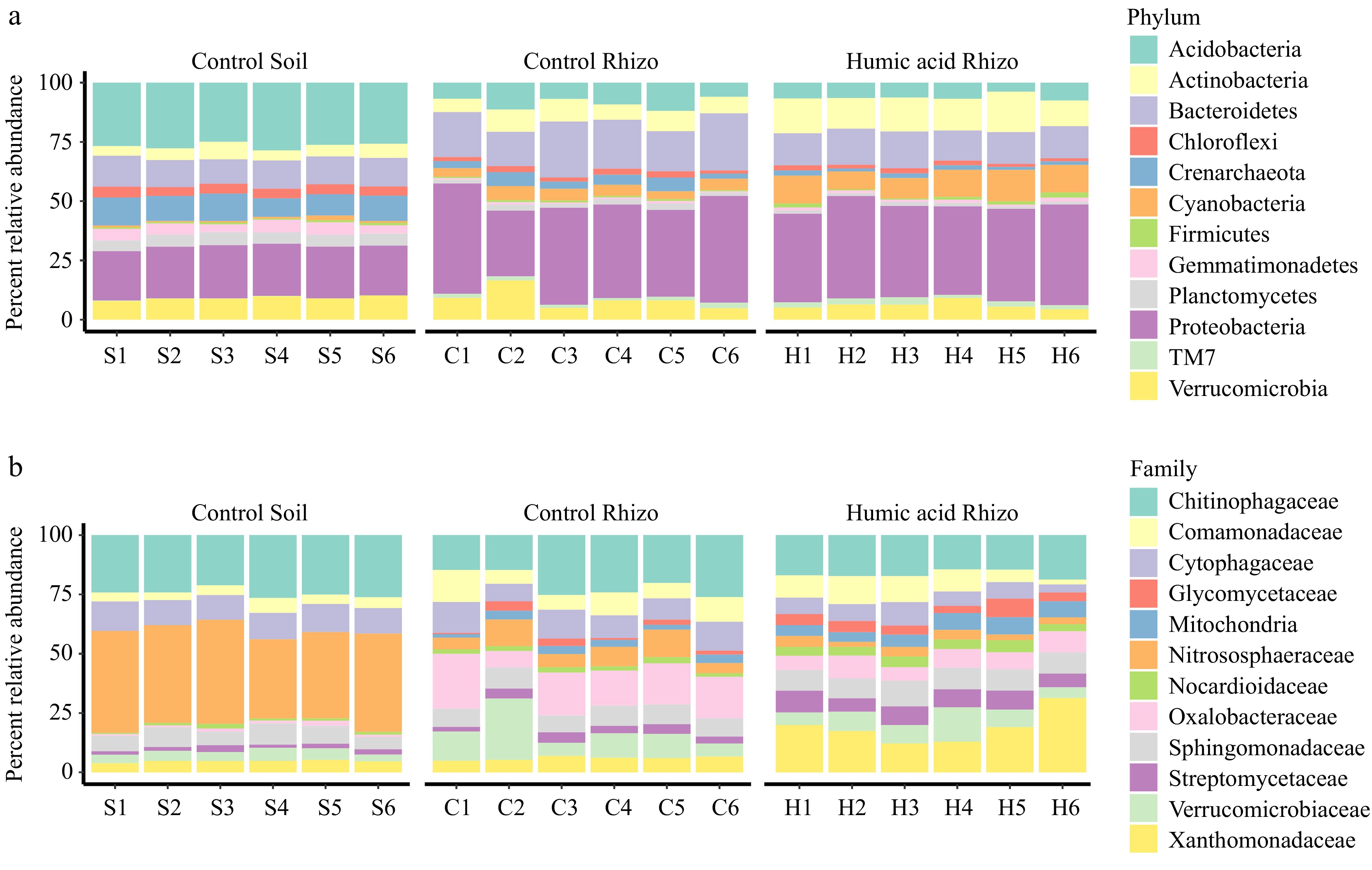
Figure 5.
Relative abundance of the top 12 of the most abundant bacterial phyla and families. Percent relative abundance of the (a) most abundant phyla, and (b) family for (c) control, humic acid (H) treatments in rhizospheres and for control in bulk soils (S). All individuals were arranged in order within each group along the x axis.
Figures
(5)
Tables
(0)